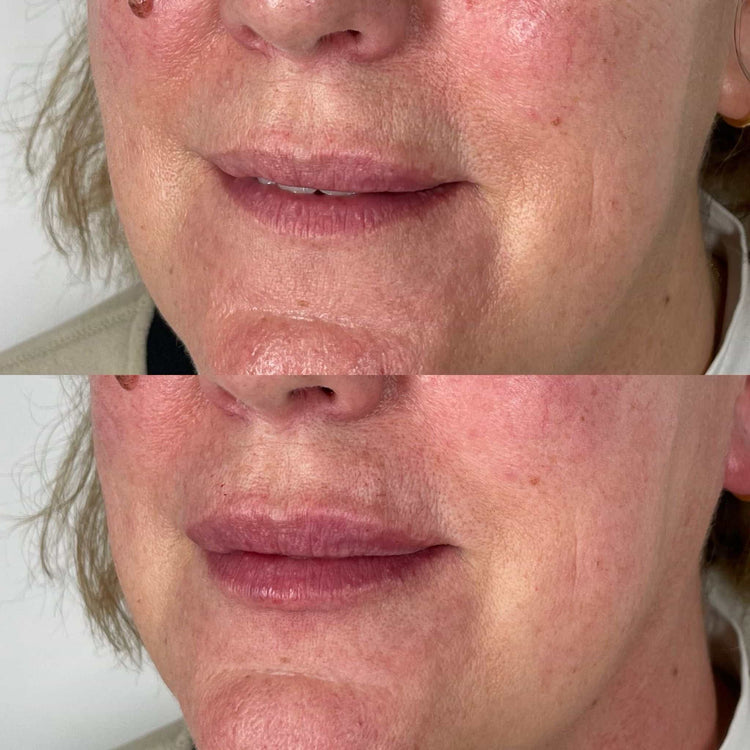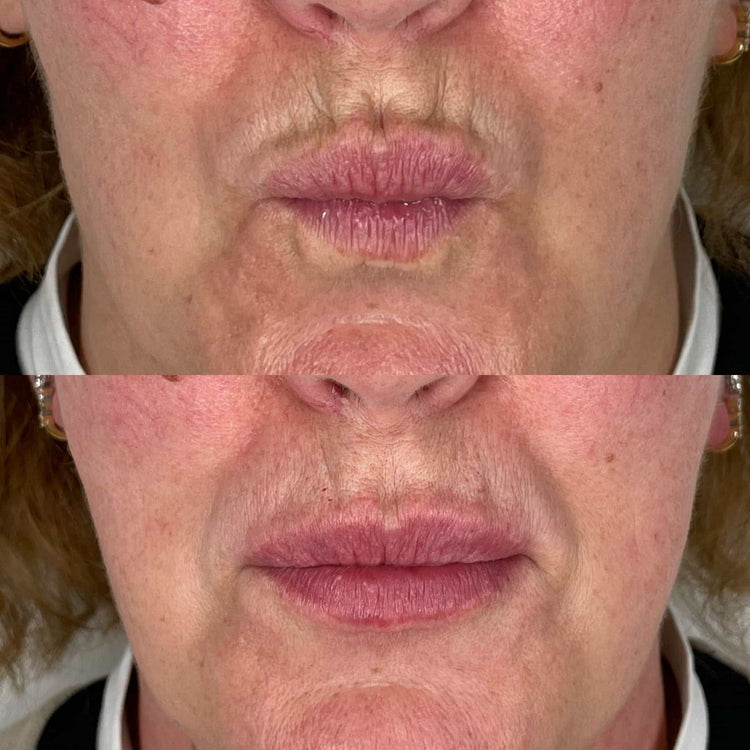Assessing Your Needs
Embarking on a journey to enhance your facial features with dermal fillers can be exciting, but it’s crucial to approach it with careful consideration. Before diving into treatments, take the time to assess your individual needs and desired outcomes. Understanding what you hope to achieve will guide your decisions and help ensure you attain natural-looking results that complement your unique beauty.
Understanding Facial Anatomy
A critical step in achieving a naturally enhanced appearance with dermal fillers is understanding your facial anatomy. Each region of the face has specific muscle groups, fat pads, and underlying bone structure. Recognizing these nuances helps determine the most suitable placement and amount of filler for optimal results.
- Forehead: Fillers here can smooth frown lines, elevate eyebrows, and create a more youthful lift.
- Cheeks: Cheek fillers add volume and definition, restoring lost fullness and sculpting cheekbones.
- Nose: Nasal fillers refine the shape of the nose, addressing bumps, asymmetry, or a desire for reshaping.
- Lips: Lip fillers enhance fullness, define contours, and create a more plump and sensual appearance.
- Jawline: Jawline fillers can strengthen and contour the jawline, creating a more defined and sculpted profile.
Identifying Desired Results
Assessing your needs involves carefully considering what you want to achieve with dermal fillers. Do you desire a subtle enhancement or a more dramatic transformation? Are there specific areas of concern, such as wrinkles, volume loss, or asymmetry?

Identifying desired results is about visualizing the outcome you desire. Browse before-and-after photos of individuals who have undergone similar procedures to get a sense of what’s achievable. Communicate your aspirations clearly with your chosen injector, providing visual references and expressing your preferences for natural-looking enhancements.
Realistic Expectations
Setting realistic expectations is paramount when considering dermal filler treatments. Understand that fillers can enhance your features but cannot completely alter your facial structure or erase all signs of aging.
It’s important to remember that each individual responds differently to fillers, and results may vary. Factors like skin elasticity, metabolism, and the specific type of filler used can influence outcomes. Open communication with your injector about realistic expectations is crucial for achieving a natural and satisfying result.
Choosing the Right Practitioner
Choosing the right practitioner is paramount when embarking on a journey of dermal fillers. A skilled and experienced injector will not only possess in-depth knowledge of facial anatomy and filler techniques but also prioritize your individual needs and desires. Look for practitioners who are board certified, have extensive experience with dermal fillers, and prioritize natural-looking results.
Qualifications and Experience
Choosing the right practitioner is paramount when embarking on a journey of dermal fillers. A skilled and experienced injector will not only possess in-depth knowledge of facial anatomy and filler techniques but also prioritize your individual needs and desires. Look for practitioners who are board certified, have extensive experience with dermal fillers, and prioritize natural-looking results.
Qualifications and experience are essential considerations when selecting a practitioner. Board certification demonstrates that an injector has met rigorous educational and training standards.
Experience is equally important. An injector’s track record of successful treatments with dermal fillers speaks volumes about their skill and understanding of facial aesthetics. Inquire about the number of years they have been performing this type of treatment, the range of filler types they utilize, and their approach to achieving natural-looking results.
Don’t hesitate to request before-and-after photos from previous patients to evaluate the injector’s aesthetic style and see if it aligns with your preferences.
Patient Reviews and Testimonials
Choosing the right practitioner is paramount when embarking on a journey of dermal fillers. A skilled and experienced injector will not only possess in-depth knowledge of facial anatomy and filler techniques but also prioritize your individual needs and desires. Look for practitioners who are board certified, have extensive experience with dermal fillers, and prioritize natural-looking results.
Qualifications and experience are essential considerations when selecting a practitioner. Board certification demonstrates that an injector has met rigorous educational and training standards.
Experience is equally important. An injector’s track record of successful treatments with dermal fillers speaks volumes about their skill and understanding of facial aesthetics. Inquire about the number of years they have been performing this type of treatment, the range of filler types they utilize, and their approach to achieving natural-looking results.
Don’t hesitate to request before-and-after photos from previous patients to evaluate the injector’s aesthetic style and see if it aligns with your preferences.
- Seek recommendations from friends or family who have had positive experiences with dermal fillers.
- Consult with multiple practitioners to gather information about their experience, approach, and pricing.
- Read online reviews carefully, paying attention to both positive and negative feedback.
Consultation Process
Choosing the right practitioner is paramount when embarking on a journey of dermal fillers. A skilled and experienced injector will not only possess in-depth knowledge of facial anatomy and filler techniques but also prioritize your individual needs and desires. Look for practitioners who are board certified, have extensive experience with dermal fillers, and prioritize natural-looking results.
Qualifications and experience are essential considerations when selecting a practitioner. Board certification demonstrates that an injector has met rigorous educational and training standards.
Experience is equally important. An injector’s track record of successful treatments with dermal fillers speaks volumes about their skill and understanding of facial aesthetics. Inquire about the number of years they have been performing this type of treatment, the range of filler types they utilize, and their approach to achieving natural-looking results.

Don’t hesitate to request before-and-after photos from previous patients to evaluate the injector’s aesthetic style and see if it aligns with your preferences.
- Seek recommendations from friends or family who have had positive experiences with dermal fillers.
- Consult with multiple practitioners to gather information about their experience, approach, and pricing.
- Read online reviews carefully, paying attention to both positive and negative feedback.
Filler Type and Placement
Filler placement plays a crucial role in achieving natural-looking results with dermal fillers. Each area of the face requires specific techniques and considerations. Understanding filler types and their properties is equally important as different fillers are designed for various applications and desired outcomes.
Hyaluronic Acid Fillers
Hyaluronic acid (HA) is a popular type of dermal filler due to its versatility and ability to attract and hold water, providing volume and hydration to the skin. HA fillers come in different consistencies, ranging from light to heavy, allowing for targeted application to various facial areas.
Light-bodied HA fillers are ideal for fine lines, wrinkles, and delicate areas like the under-eye region. Medium-bodied fillers are suitable for plumping lips, restoring volume to cheeks, and addressing moderate wrinkles. Heavy-bodied HA fillers are best used for contouring, creating strong jawlines, and addressing deeper facial folds.
Proper filler placement is crucial to avoid overfilling or unnatural appearances. A skilled injector will analyze your facial anatomy and tailor the filler injection technique to achieve your desired outcome while maintaining a natural look.
When choosing HA fillers, consider factors like the specific area of treatment, desired volume, and your individual skin characteristics. Discussing these factors with a qualified injector will help determine the most appropriate filler type for you.
Calcium Hydroxylapatite Fillers
Calcium hydroxylapatite (CaHA) is another type of dermal filler gaining popularity due to its unique properties. Unlike HA fillers, CaHA is made from microscopic calcium crystals suspended in a gel-like substance.
This distinct composition offers several advantages. CaHA stimulates collagen production, promoting long-lasting volume enhancement and skin rejuvenation. It also has a more gradual effect, allowing for subtle and natural-looking results.
CaHA fillers are often favored for treating areas requiring structural support or volume restoration, such as the cheeks, jawline, and midface. They provide a firmer lift and can effectively address deeper wrinkles and folds.
Like HA fillers, proper placement is key when using CaHA. A skilled injector will carefully assess your facial structure and customize the injection technique to achieve optimal results.
Strategic Placement Techniques
Filler placement plays a crucial role in achieving natural-looking results with dermal fillers. Each area of the face requires specific techniques and considerations. Understanding filler types and their properties is equally important as different fillers are designed for various applications and desired outcomes.
Hyaluronic acid (HA) is a popular type of dermal filler due to its versatility and ability to attract and hold water, providing volume and hydration to the skin. HA fillers come in different consistencies, ranging from light to heavy, allowing for targeted application to various facial areas.
Light-bodied HA fillers are ideal for fine lines, wrinkles, and delicate areas like the under-eye region. Medium-bodied fillers are suitable for plumping lips, restoring volume to cheeks, and addressing moderate wrinkles. Heavy-bodied HA fillers are best used for contouring, creating strong jawlines, and addressing deeper facial folds.
Proper filler placement is crucial to avoid overfilling or unnatural appearances. A skilled injector will analyze your facial anatomy and tailor the filler injection technique to achieve your desired outcome while maintaining a natural look.
When choosing HA fillers, consider factors like the specific area of treatment, desired volume, and your individual skin characteristics. Discussing these factors with a qualified injector will help determine the most appropriate filler type for you.
Calcium hydroxylapatite (CaHA) is another type of dermal filler gaining popularity due to its unique properties. Unlike HA fillers, CaHA is made from microscopic calcium crystals suspended in a gel-like substance.
This distinct composition offers several advantages. CaHA stimulates collagen production, promoting long-lasting volume enhancement and skin rejuvenation. It also has a more gradual effect, allowing for subtle and natural-looking results.
CaHA fillers are often favored for treating areas requiring structural support or volume restoration, such as the cheeks, jawline, and midface. They provide a firmer lift and can effectively address deeper wrinkles and folds.
Like HA fillers, proper placement is key when using CaHA. A skilled injector will carefully assess your facial structure and customize the injection technique to achieve optimal results.
Gradual Approach
A gradual approach is essential for achieving natural-looking results with dermal fillers. Instead of making significant changes all at once, it’s often best to start with smaller doses of filler and build up gradually over time.
This allows you to assess the results, make adjustments as needed, and avoid overfilling or an unnatural appearance. It also gives your body time to adjust to the filler, reducing the risk of adverse reactions or complications.
Remember that dermal fillers are not a one-time solution; they typically require touch-up appointments to maintain the desired results. Your injector can advise you on the appropriate frequency for these follow-up treatments based on your individual needs and the type of filler used.
Aftercare Instructions
Understanding how to avoid overfilled faces is crucial when embarking on a journey with dermal fillers. Achieving natural-looking enhancement requires careful consideration of various factors, from choosing the right practitioner to understanding filler placement and gradual treatment approaches.
Swelling Management
To minimize the risk of overly full facial features, it’s crucial to understand proper aftercare instructions for dermal fillers.
Swelling is a normal part of the healing process following filler injections. However, managing swelling effectively can help ensure natural-looking results.
Avoid touching or rubbing your face immediately after treatment as this can cause irritation and prolong swelling.
Applying cool compresses to the treated areas for 10-15 minutes at a time can help reduce inflammation.
Elevate your head while sleeping to minimize fluid buildup in the face.
Your injector may recommend specific medications or topical treatments to manage swelling.
It’s essential to follow their instructions carefully and avoid taking any over-the-counter pain relievers containing aspirin, as they can increase bleeding and bruising.
Sun Protection
Sun protection is crucial after dermal filler treatments to protect your skin from UV damage, which can break down the filler and affect its longevity.
Apply a broad-spectrum sunscreen with an SPF of 30 or higher daily, even on cloudy days.
Wear protective clothing such as hats and sunglasses to shield your skin from direct sunlight.
Avoid excessive sun exposure, especially during peak hours when UV rays are strongest.
Avoid Touching the Treated Area
To minimize the risk of overly full facial features, it’s crucial to understand proper aftercare instructions for dermal fillers.
After your treatment, avoid touching or rubbing the treated areas as this can cause irritation and prolong swelling.
- Apply cool compresses to the treated areas for 10-15 minutes at a time to help reduce inflammation.
- Elevate your head while sleeping to minimize fluid buildup in your face.
- Your injector may recommend specific medications or topical treatments to manage swelling, so follow their instructions carefully and avoid taking any over-the-counter pain relievers containing aspirin as they can increase bleeding and bruising.
Sun protection is crucial after dermal filler treatments to protect your skin from UV damage, which can break down the filler and affect its longevity.
Apply a broad-spectrum sunscreen with an SPF of 30 or higher daily, even on cloudy days.
Wear protective clothing such as hats and sunglasses to shield your skin from direct sunlight.
Avoid excessive sun exposure, especially during peak hours when UV rays are strongest.
Maintenance and Future Treatments
Achieving natural-looking enhancement with dermal fillers requires a mindful approach. It involves careful consideration of various factors, including choosing the right practitioner, understanding filler types and placement techniques, and following proper aftercare instructions.
Proper aftercare is essential for minimizing swelling, protecting your investment, and ensuring optimal results.
Follow-up Appointments
Choosing the right practitioner is paramount when embarking on a journey of dermal fillers. A skilled and experienced injector will not only possess in-depth knowledge of facial anatomy and filler techniques but also prioritize your individual needs and desires. Look for practitioners who are board certified, have extensive experience with dermal fillers, and prioritize natural-looking results.
Qualifications and experience are essential considerations when selecting a practitioner. Board certification demonstrates that an injector has met rigorous educational and training standards.
Experience is equally important. An injector’s track record of successful treatments with dermal fillers speaks volumes about their skill and understanding of facial aesthetics. Inquire about the number of years they have been performing this type of treatment, the range of filler types they utilize, and their approach to achieving natural-looking results.
Don’t hesitate to request before-and-after photos from previous patients to evaluate the injector’s aesthetic style and see if it aligns with your preferences.
- Seek recommendations from friends or family who have had positive experiences with dermal fillers.
- Consult with multiple practitioners to gather information about their experience, approach, and pricing.
- Read online reviews carefully, paying attention to both positive and negative feedback.
Maintenance and follow-up appointments play a crucial role in prolonging the results of dermal filler treatments.
- Follow-up Appointments: Your injector will advise on the appropriate frequency for these appointments, typically ranging from 6 months to 1 year, depending on the type of filler used and your individual needs.
- Touch-ups: During follow-up appointments, your injector may administer additional filler to maintain volume and address any areas that have lost their desired shape or fullness over time.
Repeat Treatments for Longevity
To ensure your dermal fillers continue to enhance your appearance for as long as possible, it’s important to consider maintenance and follow-up treatments. The longevity of dermal fillers varies depending on factors like the type of filler used, individual metabolism, and lifestyle factors such as sun exposure.
Most dermal fillers will last anywhere from 6 months to 18 months, with some longer-lasting options available.
- Follow-up Appointments: Your injector will advise on the appropriate frequency for these appointments, typically ranging from 6 months to 1 year, depending on the type of filler used and your individual needs. During follow-up appointments, they may assess the areas treated and discuss whether you need any additional filler to maintain the desired look.
- Touch-ups: Touch-up treatments involve injecting small amounts of filler into specific areas to restore volume or address any subtle changes that may have occurred over time. These appointments are crucial for extending the lifespan of your initial results and keeping your appearance looking fresh and natural.
While dermal fillers can provide a noticeable enhancement, they are not a permanent solution. Regular touch-up appointments help to maintain the desired volume and shape, ensuring that your facial features continue to look their best for longer. By embracing this approach, you can enjoy the benefits of dermal fillers while minimizing any potential for overfilling or unnatural appearances.
Enquire about dermal fillers for sagging skin at It’s Me & You Clinic with Dr. Laura Geige
- How To Avoid Overfilled Faces: Tips For Natural Dermal Filler Results - September 4, 2025
- Alluzience Longer Lasting Botox Near Oxshott, Surrey - September 3, 2025
- How Skincare Consultations Can Help With Uneven Skin Tone - August 31, 2025
